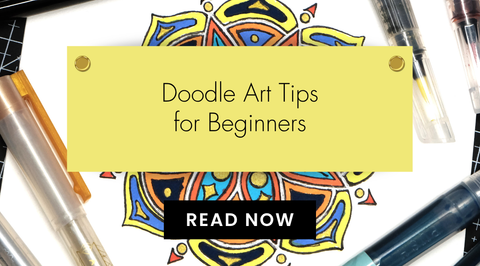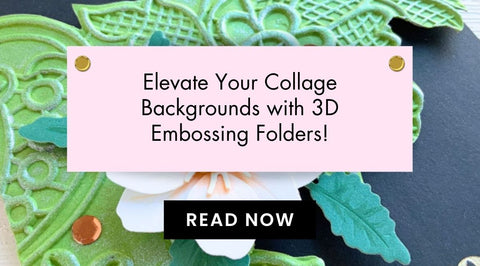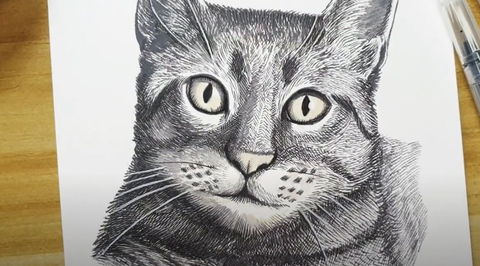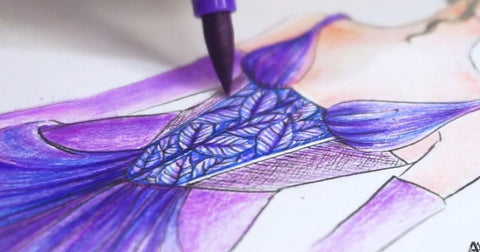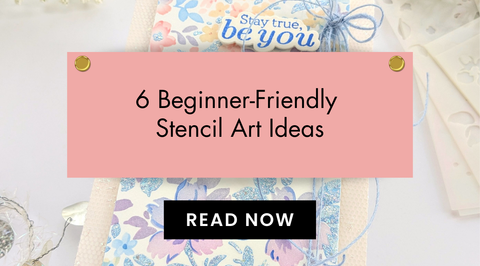Can't Draw? 3 Myths That Are Keeping You from Discovering Your Inner Artist
Last Updated: October 27, 2025
“Creativity is allowing yourself to make mistakes. Art is knowing which ones to keep.” - Scott Adams
Are you someone who admires art from a distance, believing that the ability to draw is beyond your reach? Many people share this sentiment, and it's often due to misconceptions that hold them back from pursuing their creative potential.
The truth is, drawing is not reserved for a select few; it's an expressive form of communication accessible to everyone. Let’s explore three myths that might be stopping you from picking up a pencil and expressing yourself through art.
Click the video above to learn different warm-up techniques, from quick gesture sketches to contour drawing exercises.
Myth 1: You Need Natural Talent to Be Good at Drawing
Many people believe that drawing is an innate talent reserved for the chosen few. This myth can discourage anyone who feels they lack a natural gift for art.

The Reality
Drawing, like any skill, can be learned and improved over time with practice and patience. Think of drawing as a journey, one that is as much about self-discovery and expression as it is about skill. Most great artists started as beginners, honing their craft through dedication and consistent practice.
What You Can Do
Start small and embrace the process. Dedicate a few minutes daily to sketching simple objects around you, like your coffee mug or a flower from your garden. Use different pencils, such as Artistry by Altenew's Pencil Bundle, to experiment with various effects and styles. Over time, you'll notice improvements and develop your unique style.
To keep your momentum going, set realistic goals for yourself. Challenge yourself to draw one small piece each day, gradually increasing the complexity as you gain confidence. This consistent practice will help build your skills over time, allowing you to explore new techniques and discover your strengths.
Myth 2: Drawing Requires Expensive Materials
Another common myth is that you need high-end supplies to create meaningful art. This belief can make drawing seem inaccessible and unaffordable for many.

The Reality
While high-quality materials can enhance your work, they are not a necessity when you are just starting. What's important is having the passion and willingness to create. Basic tools like a simple pencil and paper are all you need to begin exploring your artistic potential.
What You Can Do
Start with affordable art supplies that meet your needs as a beginner. Artistry by Altenew offers a range of quality yet affordable options for artists at all levels. For instance, our Brush and Fine Liner Pen Set allows you to explore a variety of techniques without breaking the bank. Remember, the key is to start creating with what you have.
Additionally, consider using recycled materials or found objects to create your art. Old newspapers, magazines, and cardboard can be transformed into beautiful pieces. This not only helps the environment but also encourages you to think creatively and resourcefully.
Myth 3: Only Realistic Art is Worth Creating

The belief that only hyper-realistic art is valuable can deter people from exploring other styles that might better express their unique perspectives.
The Reality
Art comes in many forms and styles, each valuable and meaningful in its way. Whether it's abstract, impressionistic, or surreal, every style has its own charm and emotional depth. What's most important is that your art speaks to you and reflects your vision.
What You Can Do
Explore different styles and techniques to find what resonates with you. Don’t limit yourself to one style. Experiment with various art forms like abstract drawing or doodling. Use Artistry by Altenew’s Watercolor Brush Markers to add vibrant colors to your sketches and explore the fluidity and spontaneity that watercolors can bring to your art.
Another tip is to draw inspiration from other artists and their work. Visit art galleries, attend workshops, or explore online art communities to see the diverse range of styles and approaches. This exposure will encourage you to embrace your individuality and appreciate the beauty of different artistic expressions.
Embrace Mistakes as Part of the Process

Some believe that mistakes in drawing indicate a lack of skill or talent. This myth can lead to self-doubt and discourage aspiring artists from continuing their artistic journey.
Mistakes are an integral part of the creative process. They offer valuable opportunities for learning and growth. Many artists embrace mistakes as a chance to explore new possibilities and develop their unique style.
Instead of fearing mistakes, view them as stepping stones to improvement. Use erasers to refine your work, and don't be afraid to start over or take a new approach. Remember, every artist makes mistakes, and it's through these experiences that growth and progress occur.
When you make a mistake, take it as an opportunity to learn. Ask yourself what you can do differently next time and use this knowledge to inform your future creations. Embracing mistakes as a natural part of the process will build your confidence and resilience as an artist.
Embrace Your Creativity

Breaking free from these myths opens up a world of possibilities for your artistic journey. Remember, drawing is about expressing yourself, not about perfection. Give yourself permission to create without judgment, and you’ll find that the process itself can be as rewarding as the finished piece.
Whether you're sketching with a pencil, experimenting with markers, or painting with watercolors, Artistry by Altenew offers a variety of art supplies to help you explore your creativity. Find more drawing inspiration and ideas in The Creative Corner.





